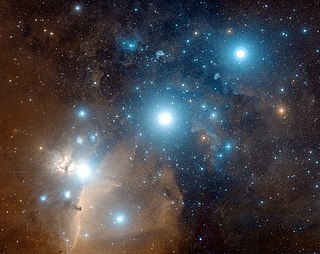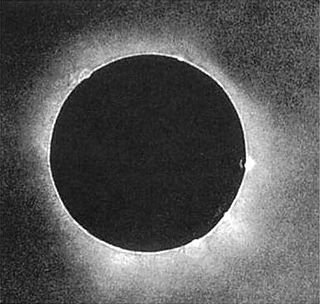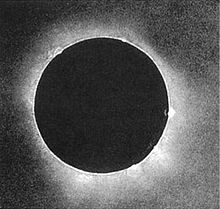
Astrophotography, also known as astronomical imaging, is the photography or imaging of astronomical objects, celestial events, or areas of the night sky. The first photograph of an astronomical object was taken in 1840, but it was not until the late 19th century that advances in technology allowed for detailed stellar photography. Besides being able to record the details of extended objects such as the Moon, Sun, and planets, modern astrophotography has the ability to image objects outside of the visible spectrum of the human eye such as dim stars, nebulae, and galaxies. This is accomplished through long time exposure as both film and digital cameras can accumulate and sum photons over long periods of time or using specialized optical filters which limit the photons to a certain wavelength.

Armand Hippolyte Louis Fizeau FRS FRSE MIF was a French physicist, who in 1849 measured the speed of light to within 5% accuracy. In 1851, he measured the speed of light in moving water in an experiment known as the Fizeau experiment.
The year 1850 in science and technology involved some significant events, listed below.
The year 1867 in science and technology involved many significant events, listed below.
The year 1866 in science and technology involved some significant events, listed below.
The year 1787 in science and technology involved some significant events.
The year 1823 in science and technology involved some significant events, listed below.
The year 1831 in science and technology involved some significant events, listed below.
The year 1819 in science and technology involved some significant events, listed below.

The year 1791 in science and technology involved some significant events.
The year 1792 in science and technology involved some significant events.
The year 1796 in science and technology involved some significant events.
The year 1859 in science and technology involved some significant events, listed below.
The year 1852 in science and technology involved some significant events, listed below.
The year 1786 in science and technology involved some significant events.
The year 1767 in science and technology involved some significant events.
The year 1750 in science and technology involved some significant events.
The year 1731 in science and technology involved some significant events.

A total solar eclipse occurred at the Moon's ascending node of orbit on Monday, July 28, 1851, with a magnitude of 1.0577. A solar eclipse occurs when the Moon passes between Earth and the Sun, thereby totally or partly obscuring the image of the Sun for a viewer on Earth. A total solar eclipse occurs when the Moon's apparent diameter is larger than the Sun's, blocking all direct sunlight, turning day into darkness. Totality occurs in a narrow path across Earth's surface, with the partial solar eclipse visible over a surrounding region thousands of kilometres wide. Occurring about 1.5 days before perigee, the Moon's apparent diameter was larger.
August Ludwig Busch was a German astronomer who served as an assistant to Friedrich Bessel and from 1846, headed the Königsberg observatory.




